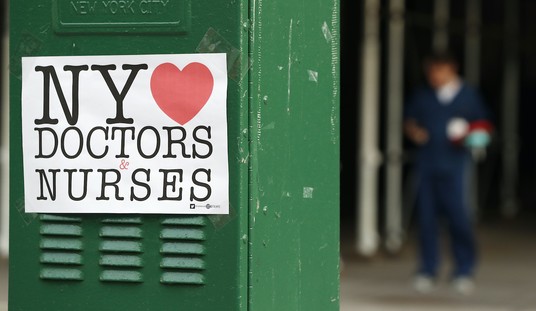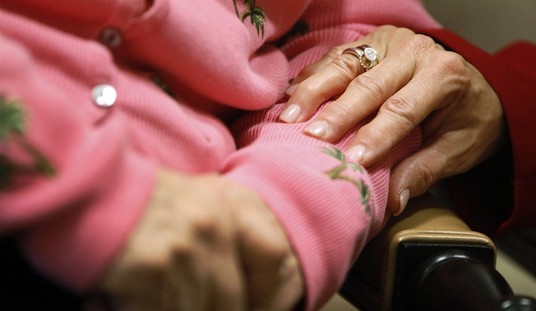Earlier in the week, the Quinnipiac poll released some grim news for the Biden White House. In that poll, which leans Democrat, Biden was sucking swamp water in every policy and attribute. This is the top line from that poll.
Biden received negative scores in the double digits on all but one key issue when Americans were asked about his handling of …
the response to the coronavirus: 48 percent approve, while 50 percent disapprove;
the economy: 39 percent approve, while 55 percent disapprove;
his job as Commander in Chief of the U.S. military: 37 percent approve, while 58 percent disapprove;
taxes: 37 percent approve, while 54 percent disapprove;
foreign policy: 34 percent approve, while 58 percent disapprove;
immigration issues: 25 percent approve, while 67 percent disapprove;
the situation at the Mexican border: 23 percent approve, while 67 percent disapprove.When it comes to Biden’s personal traits, Americans were asked whether or not Biden …
cares about average Americans: 49 percent say yes, while 48 percent say no, compared to 58 – 37 percent yes in April;
is honest: 44 percent say yes, while 50 percent say no, compared to 51 – 42 percent yes in April;
has good leadership skills: 41 percent say yes, while 56 percent say no, compared to 52 – 44 percent yes in April.More than half of Americans say 55 – 42 percent that the Biden administration is not competent in running the government.
“Battered on trust, doubted on leadership, and challenged on overall competency, President Biden is being hammered on all sides as his approval rating continues its downward slide to a number not seen since the tough scrutiny of the Trump administration,” said Quinnipiac University Polling Analyst Tim Malloy.
He was underwater with every age group, with men, women, Whites, and Hispanics. His approval with Black voters is very soft…sorta like his ice cream. He maintains a bare, 4-point plurality with college-degree holding White voters, but when you compare the “strongly approve/disapprove,” he is 10 points underwater. In short, there is no good news anywhere in that poll for Biden, and later polls will only get worse. Meanwhile, somewhere in Georgia, a desiccated, failed former president is chuckling, rubbing his hands together, and doing a little happy-dance.
My colleague Bonchie has more on this poll in his post, Joe Biden’s Latest Approval Rating Would Make George W. Bush Blush.
While this is undoubtedly seen as unfortunate by the Biden White House, the real impact is that the stench of failure and incompetence rubs off on Democrats in Congress.
Right now, a net change of five seats in the House will remove Nancy Pelosi as Speaker. Democrats hold seven seats in districts won by Donald Trump. The GOP will gain at least three through redistricting and could gain more than a dozen by that process. What is more interesting is what is shaping up in the 2022 election in general.
Two days ago, Quinnipiac also released its generic ballot poll. The generic ballot asks respondents who they would prefer to control Congress. Usually, the Democrats lead this poll. Not this time. Quoting from the Quinnipiac top line on voter preference to control Congress:
Americans were asked, if the election were held today, would they rather see the Republican Party or the Democratic Party win control of the United States House of Representatives. Forty-six percent say they would rather see the Republican Party win control, while 43 percent say the Democratic Party, with 11 percent not offering an opinion. In September, 42 percent said the Republican Party, 45 percent said the Democratic Party, and 14 percent did not offer an opinion.
Among registered voters, 47 percent say they would rather see the Republican Party win control, while 44 percent say the Democratic Party, with 9 percent not offering an opinion. In September, 43 percent of registered voters said the Republican Party, 47 percent said the Democratic Party, and 11 percent did not offer an opinion.
“Though the numbers are not overwhelming, they signal a potentially ominous trend for Democrats as a plurality of voters recommend tossing out the party that controls the House,” adds Malloy.
To fully appreciate this, at this point in 2020, the Democrats had a six-point RCP Average lead in the generic ballot. On election day, that lead was 6.8 points (again RCP Average). Despite this, the GOP gained 11 seats in the 2020 election.
Let’s go back and look at some data points where the GOP made significant gains. At this point in the 2014 election cycle, the Democrats led the generic ballot by 9 points in the Quinnipiac poll. This translated to a gain of 13 House seats for the GOP, giving them 247 seats. In 2010, the year of the Tea Party, the Democrats had a 9-point advantage at this time of the election cycle, according to Gallup. By RCP, the Democrats held a 2-point lead. The final RCP Average was a 9.4 point GOP lead and a gain of 63 seats.
At Larry Sabato’s Center for Politics, Emory University Professor Alan Abramowitz has a model for predicting the House and Senate outcomes based on the generic ballot. Using his model, the 3-point, GOP advantage should yield about 20 House seats, not counting what redistricting contributes.
To fully appreciate the situation of the House Democrats, the Quinnipiac Poll released May 26 gave the Democrats a 9-point lead in the generic ballot. The loss of a dozen percentage points in only four months could signal a total collapse by election day.














Join the conversation as a VIP Member